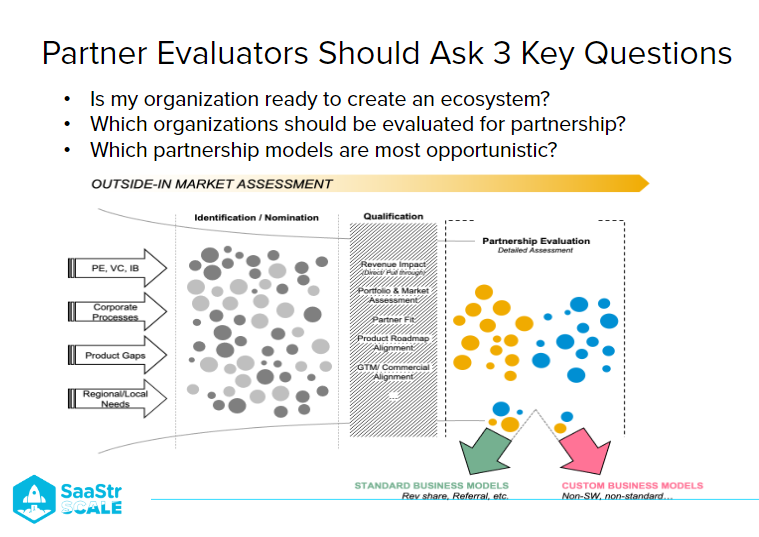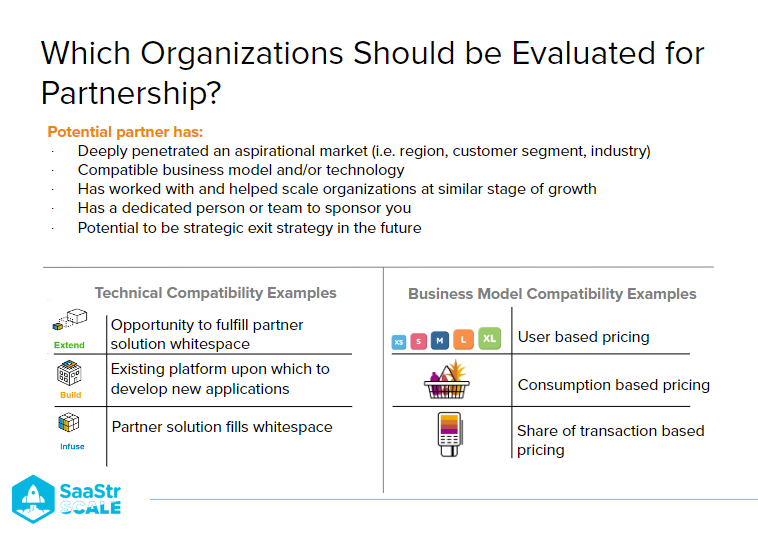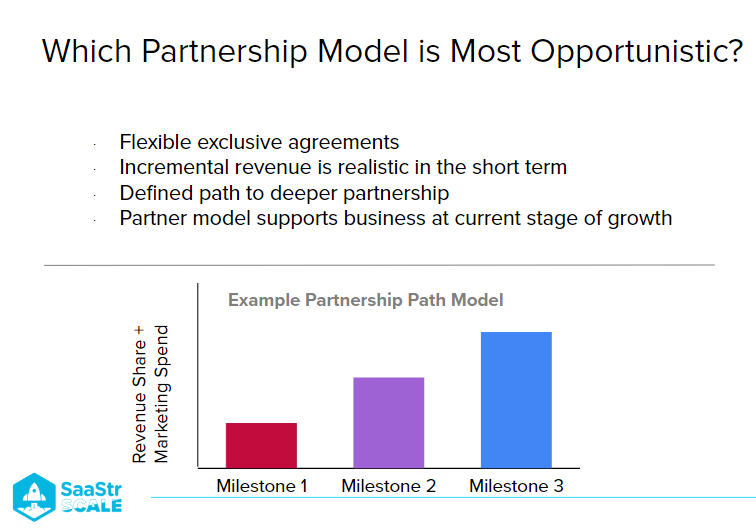For startups, a successful business partnership could mean access to new products, the opportunity to reach new markets, or increase customer loyalty. In this session, Kange Kaneene, VP at SAP.iO Foundries (North & Latin America and Caribbean), and Alok Kapur, Global VP of Strategic Partnerships and Business Development, share some essential tips on how growth companies can partner with large software companies to create powerful partnerships.
Partner Evaluators Should Ask 3 Key Questions
- Is my organization ready to create an ecosystem?
- Which organizations should be evaluated for partnership?
- Which partnership models are most advantageous?
From a market perspective, when we think about ecosystems, we look at the outside in and inside out while evaluating partnerships. Looking at revenue as the primary scale makes sense from an outside perspective. But it’s also important to ask whether the partnership is additive to product strategy, can drive feature completion, or help create something new and relevant for customers.
“Partnering with the right company can ensure that time to market and time to revenue is quicker.”
Let’s dive into these three questions and answer them in detail.

Is my organization ready to create an ecosystem?
While it can be tempting to forge a partnership with people and companies with whom you have the best relationships in your network, Kange recommends a data-led approach to the decision-making process for it to be most effective. The following considerations can help you answer the question above.
Market demand exceeds your capacity to fundraise or hire a larger team.
If data supports the notion of a significant market opportunity, but you don’t have the resources (human or financial) to get there, consider how a partnership can help you get to market faster.
Your current customer base is inquiring about a partner ecosystem.
In some cases, while companies may not be thinking about a partnership, customers’ inquiries about partnerships they wish could take place can influence their decision.
For example, as Kange shares, at SAP, a customer might say, “I have all SAPs technologies; I’m considering you as a merging company because if these two technologies don’t talk to each other from a data perspective, that doesn’t work for me.”
Timeline to establish a partnership
Most big companies take a long time to make decisions and execute. Longer timelines don’t affect big companies as much. Still, young organizations should evaluate whether or not they can afford the human and financial capital over 6 to 18 months to establish a partnership.
“Many small companies bleed due to putting in all their resources to make a partnership. Don’t suffer while trying to be strategic.”

Which organizations should be evaluated for partnership?
Deciding whether a partner could be right for you comes down to technical and business model compatibility.
Technical and Business compatibility
It is important to ensure there is a non-disruptive clear path to extend, build-on or infuse solutions from a technical perspective. For example, there are certain technology platforms that are not compatible with others so that can be a nonstarter.
It’s worth investigating whether the company has deeply penetrated an aspirational market and whether or not it has a business model compatible with your own. Can your startup fit into an existing programmatic commercial construct, or is there something the company has to work with you to build?
Check whether the company has previously worked with and helped scale organizations at a similar growth stage and whether they have a dedicated person or team to sponsor you.
Getting a sponsor who is willing to shepherd your cause and make onward introductions to concerned stakeholders is critical. Focusing on a singular sponsor may not work out, given that they may move to another company. You need to be able to leverage their move to expand your footprint and meet other potentially relevant stakeholders. Finally, evaluate the exit strategy potential in the future. The strategic opportunity in partnering with companies is greater if you work closely with them as part of the family rather than just partnering opportunistically.
Doing your business in a way that is compatible with customer needs is critical. Whether your model is user-based or consumption-based pricing, ensure that it is aligned with your partner. You can also consider share-of-transaction-based pricing, which will ensure you get a sustainable and predictable cash flow from a partnership.

Which partnership is most advantageous?
Flexible exclusive agreements
Some organizations will try to push you into an exclusive agreement, forbidding you from partnering with anybody else. That’s rarely a good idea because if your startup is valued highly, you should be open to more than just one partner.
Incremental revenue expectations
While finding the right partner is undoubtedly the most critical piece, knowing how long it will take to see the money is essential after partnership materialization. Understand clearly how the money will come in and the efforts required to accelerate that process.
Defined path to a deeper partnership
Ensure your startup’s ability to grow as the partnership grows. Establish milestones and build in ways to evaluate growth periodically.
Partner model supports business
Ensure the company you’re working with supports the growth you expect at the current stage of your business lifecycle.
Forging a winning partnership
The first step is self-reflecting, identifying whether your organization is ready to create an ecosystem and the material value of an ecosystem. Next, consider which organizations should be evaluated for partnerships. Looking at rich, large software companies makes business sense for emerging entities. Start evaluating how you can enhance their product portfolio, fill product gaps and help drive better outcomes for their customers. When you decide to consummate the partnership, ensure the business model is aligned with yours, and the company will support your startup’s growth journey.
Visit the SAP.iO website to learn about SAP’s external startup accelerator and how SAP.iO brings customers and startups together to drive innovation in the cloud by leveraging the power of SAP
Subscribe to the SAP.iO and Startup Ecosystem Newsletter to stay in touch and fill out this Startup Interest Form to be on our radar for upcoming cohorts
Visit this page to learn more about SAP PartnerEdge, SAP’s broader partner program

